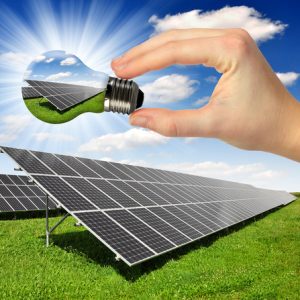In an effort to save resources and save the environment, California has emerged the recent state in the country to hit a new renewable energy generation record. This is in tandem with a bill signed into law in 2015 by the Governor of California Jerry Brown requiring that 33 percent of all state regulated amenities be powered from solar and renewable energy by the year 2020. A set target expected to up by 50 percent by 2050.
- Home
- Residential
- Commercial
- Tesla
- Testimonials
- About Us
- Contact Us
Category: Solar Power
SolarCity and Tesla Agree to 2.6 Billon Deal: What does that mean for solar?
Written by goldensolar on . Posted in Solar Power. Leave a Comment
It’s a deal that could see two companies merge on an unstable financial ground as they seek to reinvest into relatively new markets. The deal, which involves Tesla Motors Inc. and SolarCity will see the electric car manufacturer, Tesla spend 2.6 billion dollars to buy the solar panel maker SolarCity in an all stock deal.
The deal, which is awaiting approval from the shareholders and government, will see Elton Musk, a polarizing billionaire, chair, and the biggest shareholder of both companies achieve the “second part” of his master plan that entails creating electric, self-driven vehicles that obtain their energy from solar powered batteries. An idea that was first brought into the lime light in a July 20th blog post on Tesla’s website.
If all goes as planned, Musk could be putting down the foundation for a brilliant long-term strategy. However, the entrepreneur’s motives have been met with fueling concerns and criticism ever since his proposal came out in late June. The criticism mainly comes from the fact that Musk is the co-founder and President of Tesla and a co-founder of SolarCity that is presently run by his cousin Lyndon Rive.
With both companies unprofitable, criticism has ranged and termed the deal as a conflict of interest to “a blatant Tesla rescue of SolarCity.”
A Blatant Rescue?
In his part, the billionaire entrepreneur in his blog post writes that, it is largely by accident of history that the two companies were ever separate. Musk adds that his main intention has been to have both companies operate as one, in a common undertaking that entails providing sustainable energy. Further, Musk points out that having both Tesla and SolarCity run as a unit will make the entire mission more efficient. In a joint post, both companies agreed that it was the perfect time for Tesla to unite with SolarCity since Tesla was gearing up to scale its Powerwall and Powerball home battery packs that pull energy from solar panels and the power grid and storing it for use. Tesla’s idea is to make car batteries that function in a similar manner. Both companies believe that the merger will help them save around 150 million dollars in operating expenses within the first year of operation. Although some investors are not yet convinced, a number of analysts have indicated that Tesla’s brand recognition could give the solar panel maker a major boost. The deal, which is anticipated to close in the fourth quarter, will see SolarCity take on Tesla’s name and market its solar panels and batteries under Musk’s plan. In his discernment, the billionaire entrepreneur believes that most of the people who will have a particular interest in driving electric cars will have a natural interest in creating clean energy systems in their homes and businesses. If Elton’s big dream sails through, this could be a new dawn for solar energy and its applications. For more industry news and trends stay tune to our blog!Top Ten Fun Facts About Solar Energy
Written by goldensolar on . Posted in Solar Power. Leave a Comment
 Sunlight is free and it is the most reusable, sustainable
Sunlight is free and it is the most reusable, sustainable 10 Fun Facts About Solar Energy
1. The earth receives 1,366 watts of solar energy per square meter everyday. About 30% is reflected back but the rest of it is absorbed by the planet. 2. The total amount of solar energy absorbed by the earth in a year is approximately 8,000 times more than the total consumption of energy world-wide. This is 40,000 times greater than the amount of energy used annually in the United States. 3. NASA has experimented with unmanned solar powered aircraft for over 30 years. The Pathfinder Plus and Helios Prototype are examples. 4. The world’s largest solar power plant is located on 1,000 acres in California’s Mojave Desert. 5. Solar power can be passive in just supplying warmth and light. Windows are passive solar systems allowing light and energy into a room. Shutters, shades, blinds and curtains are designed to control the amount of sunlight coming in through a window as well as to provide privacy. Tinted windows are used to limit harmful ultraviolet rays. Greenhouses and conservatories use a passive solar system for light and warmth. They usually have windows on three sides to bring in light. 6. The sun’s energy comes from nuclear fusion. This is the combining of atoms rather that splitting them as in nuclear fission. (Nuclear fission is used for reactors and weapons.) Science is working on ways to harness nuclear fusion as the ultimate energy source without creating any destructive elements. Hydrogen extracted from seawater using a nuclear fusion process can supply more energy than fossil fuel. 7. Solar panels contain photovoltaic cells that use semiconductor materials that attract sunlight. When the sun hits the cells, electrons are released from their atoms. The electrons flow through the cells providing energy. 8. Solar panels have a lifespan of 25 to 30 years making them an outstanding investment for homes and commercial buildings. 9. Homeowners using solar panels spend approximately $1,200 less on electrical costs each year. This is an average based on the location of residences. Power that is not used in the residence is contributed to the the public grid system. Solar power users receive credits for their contributions. 10. Solar power does not work at night but the energy can be stored in batteries. The stored energy can be used after dark or on cloudy days when the solar cells receive less sunlight. Special quinone-based flow batteries are in the experimental stage as a better means of storing solar energy. Thermal storage tanks are another new development for energy storage. Future technology will improve our ability to use the sun’s unlimited energy.10 Creative Solar Energy Applications
Written by goldensolar on . Posted in Solar Power. Leave a Comment
 When most people think about solar power system, they often think about solar panel and solar panel installation. What they do not realize is that there is much more to solar energy than just the panels on the roof. There are several creative applications that can be used to harness power from the sun.
When most people think about solar power system, they often think about solar panel and solar panel installation. What they do not realize is that there is much more to solar energy than just the panels on the roof. There are several creative applications that can be used to harness power from the sun.
Solar Power Cell Phone Chargers
These chargers are excellent for anyone whose phone often dies when they are not at home or in their vehicle. There are a few types of solar power phone charges. Some need to have the cells embedded in the phone, some are sold as a charging device, and some are a cell phone cover with solar cells. It usually takes 2 hours of sunlight to get 30 minutes of talk time.Solar Power Backpack
You can purchase a backpack that is covered in solar cells, that will charge all of your electronics inside. It is a great way to charge a phone, GPS, MP3 player, and laptops.Solar Powered Attic Fans
Keep the space between the attic and the roof dry with a solar attic fan, without costing additional money on energy charges.Solar Hot Water
A solar hot water system will give you free hot water using the sun. With solar a solar hot water system, you can save greatly on your energy bills.Solar Fabric
Solar fabric is made when solar cells are woven into textile fibers. One product where this works great is a solar tent. When inside, you can charge all of your electronics using the solar energy. Solar Paint Solar paint can be used on siding, roofing materials, windows, and other building materials. It is a great way to generate energy from the sun. When used around the home, this paint can on energy costs. Solar Cookers If you like camping or off-grid living, solar cookers are great for you. You don’t need electricity to use the cooker, and if used in the home, the heat won’t overheat the home the way that a traditional oven will. Solar Lawn Mover This is a great way to cut the lawn, without needing to use gasoline or electricity. When the embedded solar panels are left in the sun for a few hours, the panels generate enough solar energy to cut the grass all afternoon. Solar Street Lights and Traffic Lights Many cities and towns use these already. A solar panel is placed beside the sign, giving it the power it needs to run, without spending the taxpayers money. Solar Power Generator These are great for anyone struggling when the power is out. Because they run off the power of the sun and not gasoline, you don’t need to drive around to find a gas station that has power. With all of the strives that we are making when it comes to solar power, it is only a matter of time before everyone will be using the sun to generate clean energy for all of their electricity needs.Federal Solar Energy Tax Credit | eHow
Written by goldensolar on . Posted in Solar Power. Leave a Comment
In order to promote the use of solar power in American homes, the Department of Energy and EPA have come together to offer tax credits for homes that use solar energy. Understanding how to take advantage of the solar panels available to you may seem difficult, but it need not be. This guide will explain how federal solar energy tax credits work.
Why Are Tax Credits Available?
Tax credits are provided for Americans who rely on solar power because it is excellent for the environment. It does not pollute the world around us, and it reduces the reliance on fossil fuels. The hefty price you spend to reduce your carbon footprint means that the government will give you a tax break.Solar Installation Credits
In 2016, all solar power systems that are approved by Energy Star would allow homeowners to claim 30 percent of the cost as a tax credit. Credits are taken off the amount of tax you would have paid, not from the portion of your income considered taxable. Homeowners are allowed to claim credit for homes they live in, vacation homes, and new constructions.How to File for Solar Credits
Claiming this credit is not difficult. Simply file the IRS Form 5695 alongside the rest of your tax return. You will be asked to determine the credit you deserve on the form and then fill in the number on the Form 1040. For installations up to 2019, you may receive a 30 percent tax credit. The credit’s percentage will begin to decrease after that point, reaching 22 percent in 2022.Restrictions on Solar Credits
Here’s the bad news: you cannot receive the full credit if it turns out that the credit is bigger than your tax bill itself. You won’t expect to receive a refund because of it. On the other hand, you will be allowed to carry the credit over for the next year. There is no cap on the credit amount; however, you cannot claim credit if you install the system on a property that you rent out. Reduced credit is available for homes you live in part time. Additionally, you may not receive a credit for solar panels that heat a swimming pool or hot tub. If you are intent on solar panel installation, the tax credits will be just one more incentive to relying on solar energy. For many, it is just an added bonus rather than the central reason for having the panels installed.









